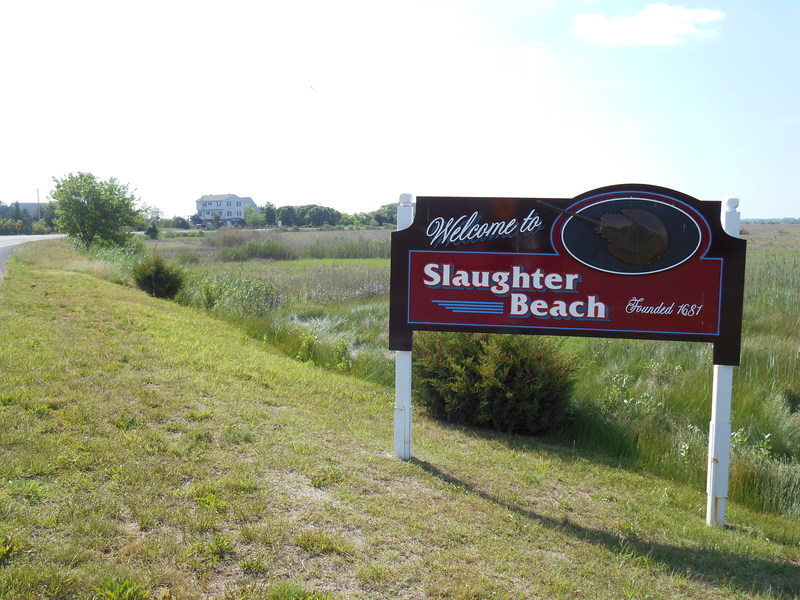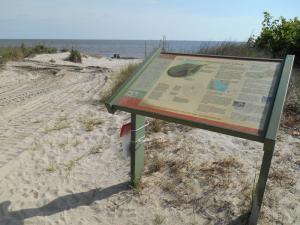Leading a nationwide trend in community concern for habitat loss, Slaughter Beach has been officially designated a Community Wildlife Habitat by the National Wildlife Federation. This is the 83rd community in the country and the third community in Delaware to receive this honor. A Community Wildlife Habitat project creates multiple habitat areas in backyards, schoolyards, corporate properties, community gardens, parkland and other spaces.
NWF commends the dedicated residents of Slaughter Beach and Delaware Nature Society for their wildlife conservation efforts and for coming together for a common purpose - to create a community where people and wildlife can flourish. At a time when communities are faced with problems of losing habitat to development, Slaughter Beach stands out as a model for other communities to emulate. The knowledge and inspiration that this project has generated will lead Slaughter Beach residents and visitors to take better care of their natural world.
The Town of Slaughter Beach, a Horseshoe Crab Sanctuary, was founded in 1681 and incorporated in 1931. The town is bordered to the east by the Delaware Bay and to the west by Prime Hook National Wildlife Refuge, Milford Neck Wildlife Area and the Marvel Tract Salt Marsh. The town shares space with a rich, diverse and fragile ecosystem. In May and June, horseshoe crabs come ashore to spawn. Slaughter Beach is one of the busiest spawning areas in the world. After very long flights, migratory shorebirds including red knots return in the spring looking for horseshoe crab eggs the on the beach.
“Congratulations to my friends in Slaughter Beach for their continued actions to protect wildlife and its habitat. Through the Community Wildlife Habitat program, the town and residents are providing high-quality wildlife habitat right where people live, work, play, learn and worship,” said Collin O'Mara, president and CEO of the National Wildlife Federation. “Slaughter Beach has long been known for the horseshoe crabs that spawn on its beaches and the amazing spring and fall migration of shorebirds. The town is now joining an elite group of cities and towns certified by the National Wildlife Federation for making a difference for wildlife throughout the community.”
“The NWF Community Wildlife Habitat project was a natural extension of what residents were already doing in Slaughter Beach. Residents realize it’s not about us; it’s about where we live. Surrounded by wildlife refuges to the west and the bay to the east, the area supports an abundance of wildlife which needs to be preserved and protected. We don’t share our space with them; they share their space with us. Because of this, we need to be good stewards and help where and how we can, from flipping horseshoe crabs, to sustainable gardening practices including planting native plants to attract and benefit wildlife,” said Bill McSpadden, a longtime resident of Slaughter Beach who helped get the town certified.
The Community Wildlife Habitat project is part of NWF’s Garden for Wildlife program. These projects benefit the entire community of plants, wildlife, and people through the creation of sustainable landscapes that require little or no pesticides, fertilizers, and excess watering. These landscapes help keep water and air resources clean. They are healthier for people and the environment, and are less resource-dependent than conventional landscapes. Habitat landscapes can beautify urban areas and give residents pride in their neighborhoods.
For more National Wildlife Federation news, go to www.nwf.org/news.


















































